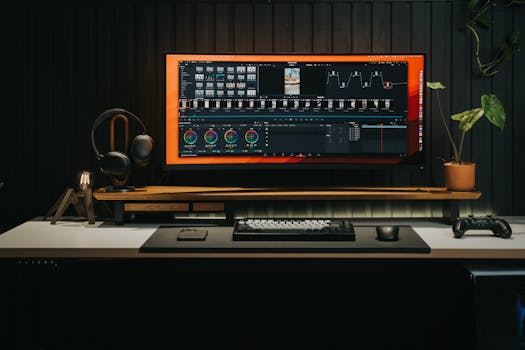What is creative workflows?

What is creative workflows?
Creative workflows are structured processes that creative teams use to manage their projects and ideas effectively. They play a crucial role in enhancing productivity, keeping tasks organized, and ensuring that every team member knows their responsibilities. In today’s fast-paced work environment, understanding and implementing effective creative workflows can streamline operations and foster innovation.
Understanding Creative Workflows
At its core, a creative workflow is a sequence of steps that guide a project from conception to completion. This process is essential for managing creative endeavors efficiently. Without a well-defined workflow, projects can easily become chaotic, leading to missed deadlines and overlooked details.
What Constitutes a Creative Workflow?
A creative workflow typically includes several key components:
- Idea Generation: The initial brainstorming phase where team members contribute ideas.
- Planning: Detailed discussions about how to turn ideas into actionable tasks.
- Execution: The actual creation of content or designs.
- Review and Feedback: Gathering input from team members or stakeholders to refine the work.
- Approval: Finalizing the project before it goes live or is delivered.
Each of these steps is vital in ensuring that the project progresses smoothly and meets the desired objectives. For a comprehensive exploration of the components involved, check out Ziflow’s guide on creative workflows.
Benefits of Implementing Creative Workflows
Implementing creative workflows offers numerous benefits:
- Enhanced Productivity: By clearly defining steps, team members can focus on their tasks without confusion.
- Increased Creativity: A structured approach allows more time and energy to be directed toward creative thinking rather than logistical issues.
- Improved Project Management: Workflows help track progress and maintain accountability, making it easier to manage deadlines.
These benefits not only contribute to successful project outcomes but also foster a more positive working environment. For an in-depth look at how to manage creative workflows, consider visiting Smartsheet’s guide.
Types of Creative Workflows
Creative workflows can vary significantly across different industries and teams. Understanding these variations can help you choose the right approach for your specific needs.
Linear Workflows
Linear workflows follow a straight path from one step to the next. Each phase must be completed before moving on to the next. This type is beneficial for projects with clear, sequential tasks, like film production or traditional publishing.
Iterative Workflows
In contrast, iterative workflows allow for more flexibility. Teams can revisit earlier steps based on feedback, which is especially useful in industries like software development or design. This approach encourages experimentation and refinement, leading to more innovative results.
Collaborative Workflows
Collaborative workflows emphasize teamwork, often involving multiple stakeholders in the creative process. This type is significant in environments where collective input is crucial, such as marketing campaigns or product design. The collaborative nature not only enhances creativity but also promotes a sense of ownership among team members.
How to Optimize Creative Workflows
Optimizing your creative workflows can lead to greater efficiency and better results. Here are some practical tips:
Identifying Bottlenecks in Your Workflow
Take a close look at each step of your creative process. Are there stages where tasks frequently get delayed? Recognizing these bottlenecks is the first step towards improving your workflow. Consider conducting team reviews to spot recurring issues and address them proactively.
Tools and Techniques for Enhancing Workflows
Utilizing the right tools can significantly enhance your creative workflow. Software like project management tools can help keep track of tasks and deadlines. Techniques such as time-blocking and regular check-ins can also ensure that everyone stays on the same page. For insights on tools and techniques, explore ClickUp’s guide.
Case Studies of Successful Creative Workflows
Looking at real-world examples can provide valuable lessons on how to implement effective creative workflows.
Case Study: Company A
Company A, a leading marketing agency, faced challenges in meeting deadlines due to unclear roles and responsibilities. By implementing a structured creative